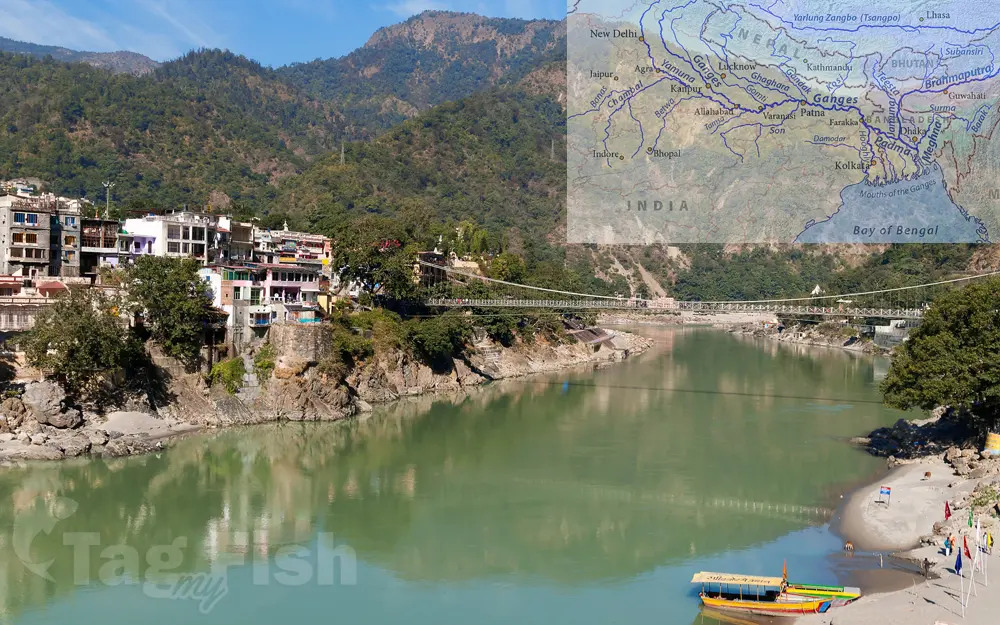Ganges

General data
- Name: Ganges
- Water system: Bay of Bengal
- Water type: River
- Progression: Bay of Bengal -> Indian ocean -> Planet Earth
- Climates:
- Continents: Asia
- Countries: Bangladesh, India
The Ganges or Ganga is a trans-boundary river of Asia which flows through India and Bangladesh. The 2,525 km (1,569 mi) river rises in the western Himalayas in the Indian state of Uttarakhand, and flows south and east through the Gangetic plain of North India into Bangladesh, where it empties into the Bay of Bengal. It is the third largest river on Earth by discharge. The main stem of the Ganges begins at the town of Devprayag, at confluence of the Alaknanda, which is the source stream in hydrology because of its greater length, and the Bhagirathi, which is considered the source stream in Hindu mythology. The Ganges is a lifeline to millions of people who live in its basin and depend on it for their daily needs. It has been important historically, with many former provincial or imperial capitals such as Pataliputra, Kannauj, Kara, Munger, Kashi, Patna, Hajipur, Delhi, Bhagalpur, Murshidabad, Baharampur, Kampilya, and Kolkata located on its banks or the banks of tributaries and connected waterways. The river is home to approximately 140 species of fish, 90 species of amphibians, and also reptiles and mammals, including critically endangered species such as the gharial and South Asian river dolphin. The Ganges is the most sacred river to Hindus. It is worshipped as the goddess Ganga in Hinduism. The Ganges is threatened by severe pollution. This poses a danger not only to humans but also to animals. The levels of fecal coliform bacteria from human waste in the river near Varanasi are more than a hundred times the Indian government's official limit. The Ganga Action Plan, an environmental initiative to clean up the river, has been considered a failure which is variously attributed to corruption, a lack of will in the government, poor technical expertise, environmental planning and a lack of support from religious authorities.


